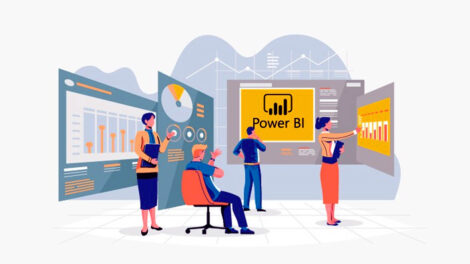ERP and Business Intelligence are two powerful tools that have revolutionized the way companies manage their resources and make strategic decisions are Enterprise Resource Planning (ERP) systems and Business Intelligence (BI) solutions. Let’s delve into what each of these entails and how their integration can drive significant business value.
Understanding ERP Systems
Definition and Overview
Enterprise Resource Planning (ERP) systems are comprehensive software solutions designed to streamline and integrate business processes across various departments within an organization. These systems provide a centralized repository of data and facilitate seamless communication and collaboration across functions such as finance, human resources, supply chain management, and more.
Components of an ERP System
Typically, an ERP system consists of modules tailored to specific functions, including accounting, inventory management, customer relationship management (CRM), and manufacturing. These modules work together to automate routine tasks, improve operational efficiency, and enhance decision-making capabilities.
Benefits of ERP Systems
The implementation of an ERP system offers numerous benefits to organizations, including improved productivity, better resource allocation, enhanced data accuracy, and greater transparency across the enterprise. By providing real-time insights into key performance indicators (KPIs), ERP systems empower businesses to make informed decisions and respond swiftly to market changes.
Introduction to Business Intelligence (BI)
Definition and Overview
Business Intelligence (BI) refers to the process of collecting, analyzing, and visualizing data to uncover actionable insights that drive strategic decision-making. BI solutions leverage advanced analytics tools and techniques to transform raw data into meaningful information, enabling organizations to identify trends, patterns, and opportunities for growth.
Components of BI
A typical BI system comprises various components, including data warehouses, data marts, dashboards, and reporting tools. These components work in tandem to extract, transform, and load (ETL) data from disparate sources, perform complex analytics, and present findings in a user-friendly format for stakeholders at all levels of the organization.
Benefits of BI
The adoption of BI solutions empowers organizations to gain a competitive edge by enabling them to visualize trends, forecast future performance, and optimize business processes. By democratizing access to data and insights, BI systems foster a data-driven culture where decision-making is based on empirical evidence rather than intuition or guesswork.
Integration of ERP and Business Intelligence
Importance of Integration
While ERP systems excel at managing operational data and transactions, BI solutions are specialized in analyzing and interpreting this data to uncover actionable insights. By integrating ERP and BI systems, organizations can bridge the gap between transactional data and analytical insights, enabling seamless data flow and facilitating informed decision-making.
Advantages of Integrating ERP and BI
The integration of ERP and BI offers several strategic advantages, including enhanced visibility into business operations, improved forecasting accuracy, and better alignment between strategic goals and operational activities. Moreover, by combining transactional data from ERP systems with analytical capabilities of BI solutions, organizations can gain a holistic view of their performance and identify areas for improvement.
Challenges in Integrating ERP and BI
Data Compatibility Issues
One of the primary challenges in integrating ERP and BI systems is ensuring compatibility between different data formats, structures, and schemas. Since ERP systems often store data in proprietary formats, extracting and transforming this data for analysis in BI tools can be complex and time-consuming.
Organizational Resistance
Another challenge is overcoming organizational resistance to change, as employees may be reluctant to adopt new technologies or processes. Effective change management strategies, including training, communication, and stakeholder engagement, are essential to overcoming resistance and ensuring the success of integration initiatives.
Cost Implications
Integrating ERP and BI systems can be costly, both in terms of upfront investment and ongoing maintenance. Organizations must carefully weigh the potential benefits against the associated costs and ensure that integration efforts align with their strategic objectives and budgetary constraints.
Best Practices for Successful Integration
Data Governance
Establishing robust data governance policies and procedures is essential for ensuring data quality, consistency, and security across integrated ERP and BI systems. By defining data standards, roles, and responsibilities, organizations can minimize the risk of data discrepancies and ensure compliance with regulatory requirements.
Change Management
Effective change management is critical for overcoming organizational resistance and fostering a culture of innovation and continuous improvement. By involving employees in the integration process, providing training and support, and communicating the benefits of integration, organizations can facilitate smooth transitions and maximize the success of integration initiatives.
Training and Education
Investing in training and education is essential for equipping employees with the skills and knowledge needed to leverage integrated ERP and BI systems effectively. By offering comprehensive training programs and ongoing support, organizations can empower employees to harness the full potential of these powerful tools and drive business value.
Real-world Examples of Successful Integration
Several leading organizations have successfully integrated ERP and BI systems to achieve significant business benefits. For example, multinational corporations like Coca-Cola and Procter & Gamble have leveraged integrated ERP and BI solutions to improve supply chain visibility, optimize inventory management, and enhance decision-making capabilities.
The Synergy Between ERP and BI
Now, let’s explore how ERP and BI work together.
- Data Integration: ERP captures massive data, and BI analyzes it. Together, they create a holistic view of the organization.
- Real-Time Insights: While ERP connects the dots between processes, BI provides real-time analysis. Leaders can make smarter decisions based on up-to-date information.
- Agility: The combination of ERP and BI enhances a company’s agility. It allows leaders to oversee operations effectively and adapt swiftly to market changes.
- Increased Profitability: BI helps businesses focus on competitive advantages, optimize processes, and ultimately boost profitability.
Why Your Business Needs Both
In summary, ERP and BI are like a dynamic duo.
- ERP ensures efficient process management.
- BI transforms raw data into actionable insights.
Together, they empower businesses to thrive in a data-driven world. So, embrace ERP and BI—your path to success awaits!




